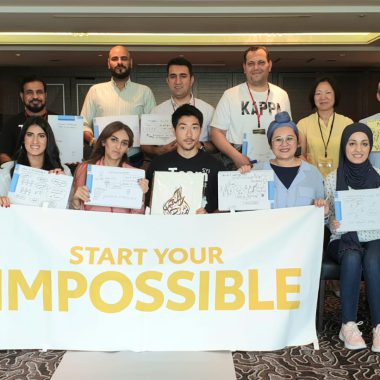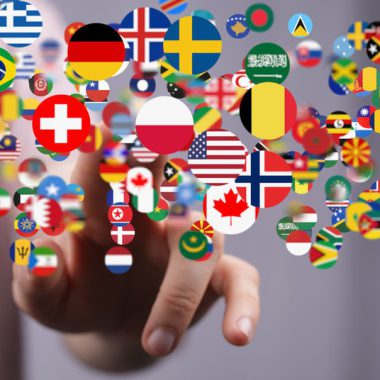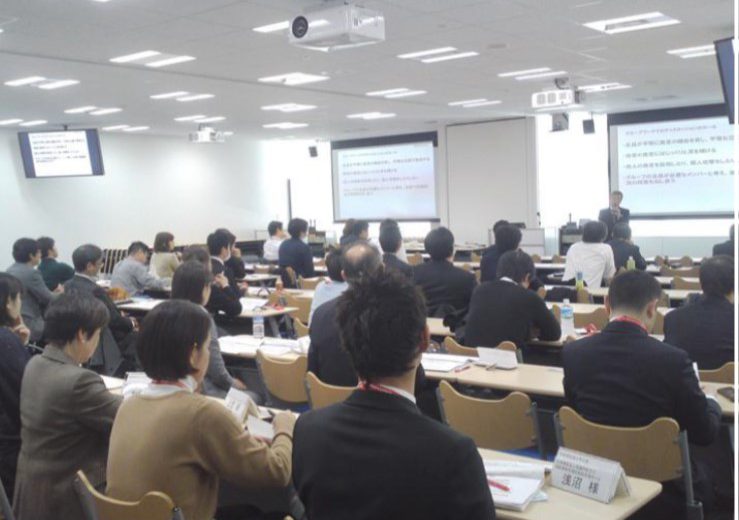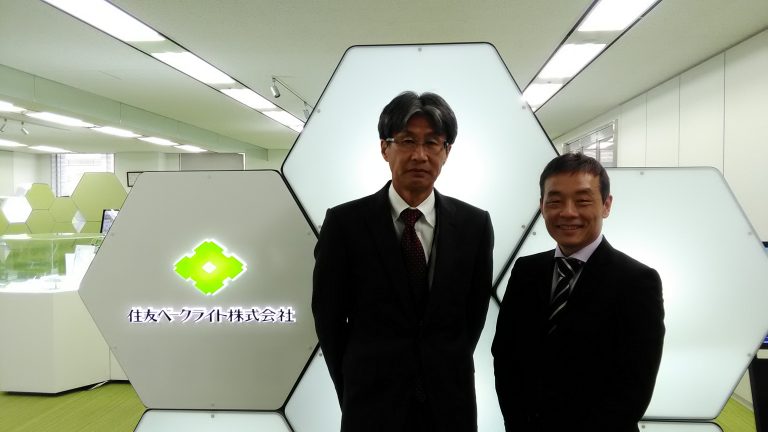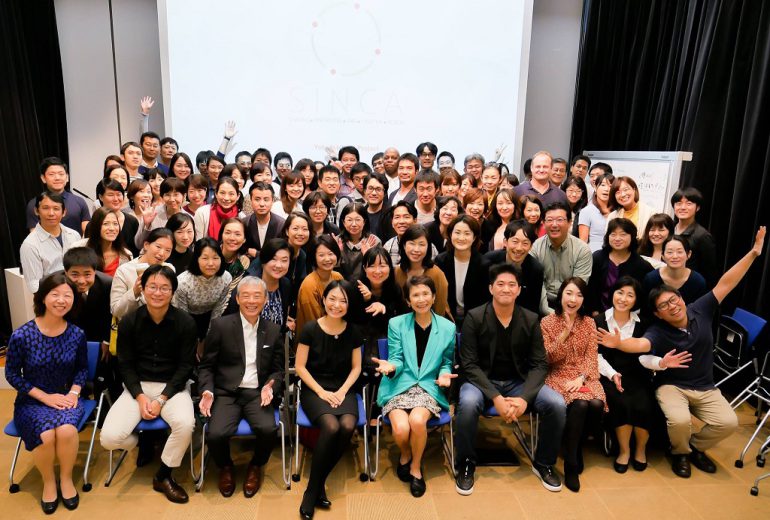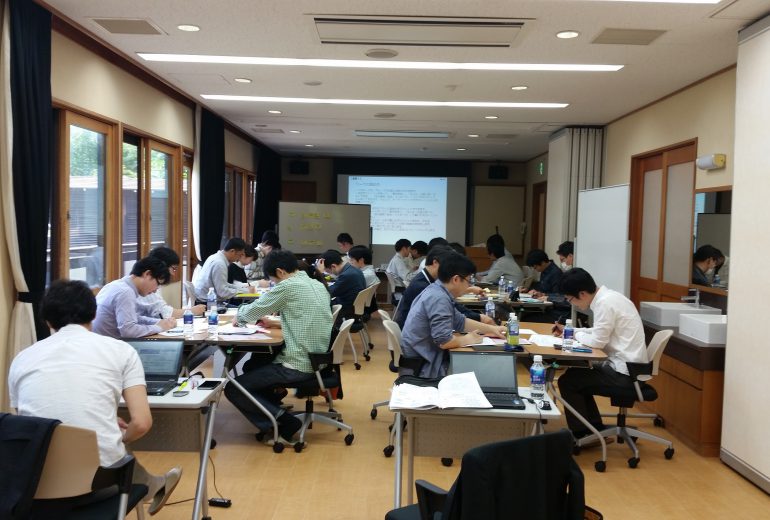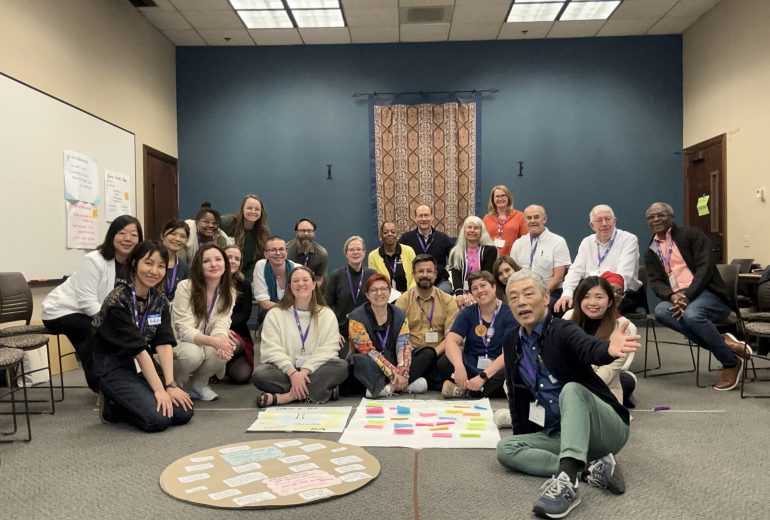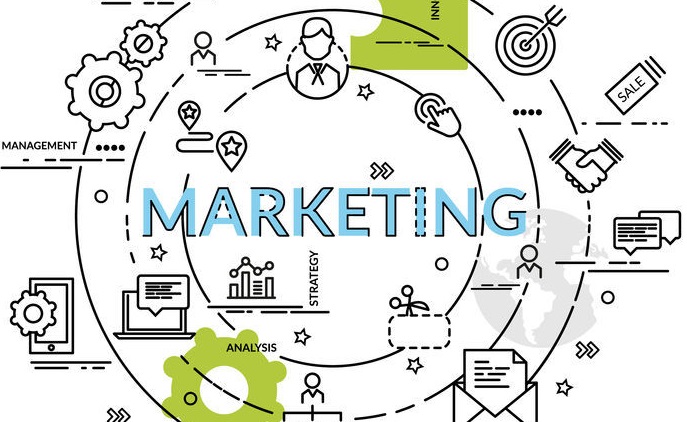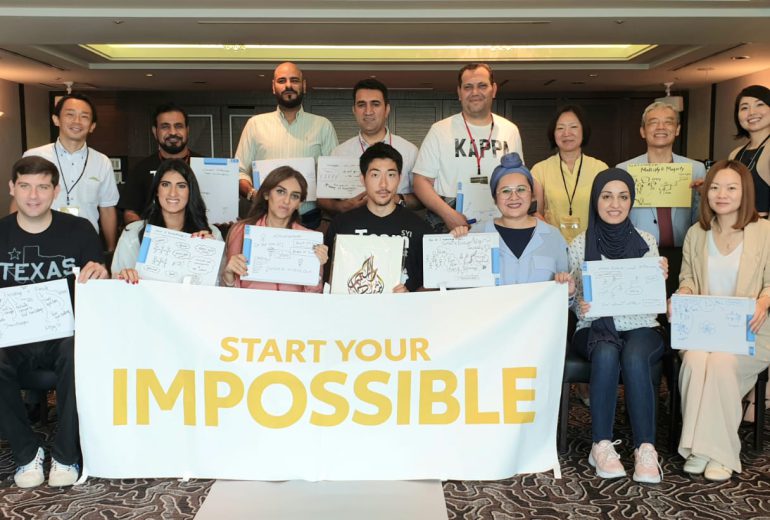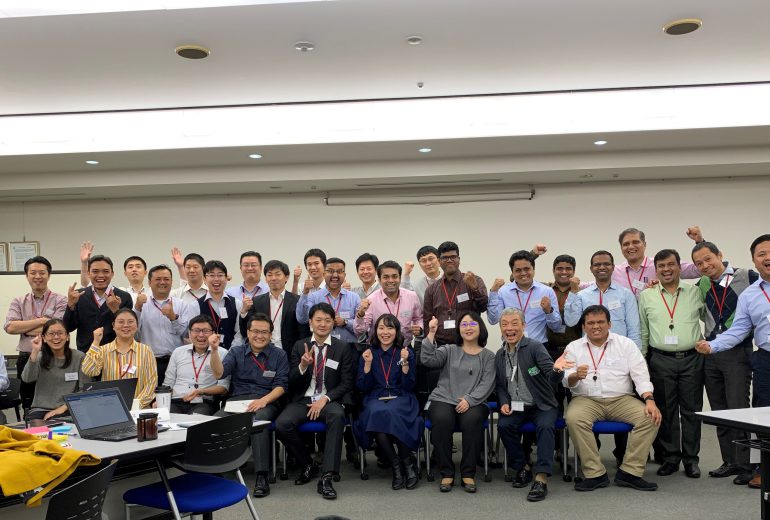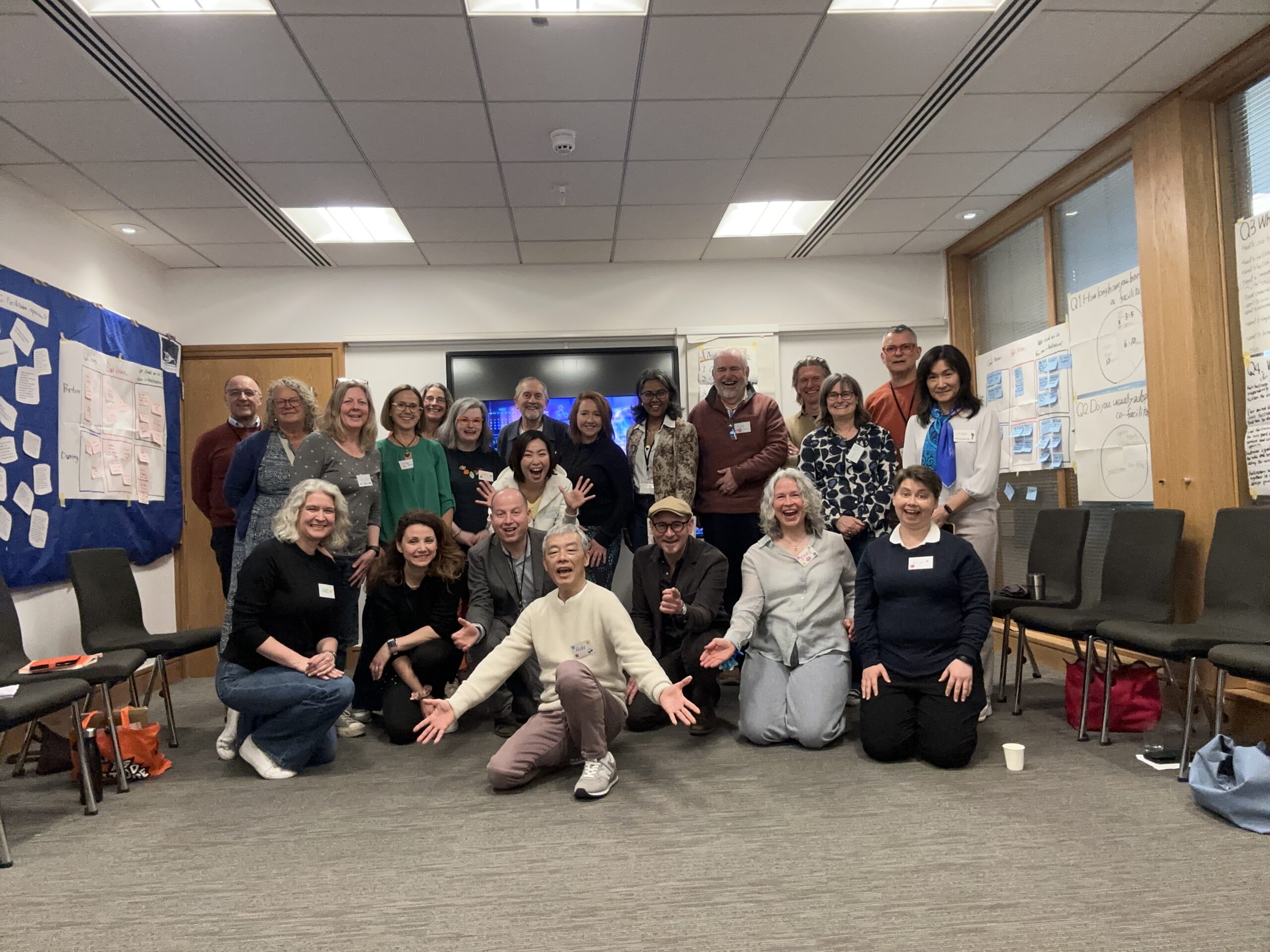This post is also written in the following language:
![]() English (英語)
English (英語)
2024年10月にオンラインで開催されたファシリテーターの国際カンファレンス、IAF Facilitation Summit 2024で、オリジナルのワークショップのファシリテーションを実施しましたので、レポートします。
IAF(The International Association of Facilitators)は、全世界で数千人のファシリテーターが会員になっているファシリテーターの国際的な団体で、アジア、アメリカ、ヨーロッパ、アフリカなどの地域で毎年ショウケース的なカンファレンスを開催しています。
今回はオンラインでの開催ということで、全世界からさまざまな参加者が、さまざまな時間帯で開催されるセッションに参加しました。
弊社代表、吉岡英幸が、コ・ファシリテーターの射水 和香子(いみず わかこ)さんとファシリテーションしたワークショップのタイトルは、
How to achieve Leap Frog Growth as a facilitator.
~The ways to evolve our competencies to shape the brighter future of facilitation~
です。
Leap Frog Growthとは非線形の成長
このLeap Frogとは、まさに蛙がぴょんと飛ぶように、ある一瞬で大きな成長をすることを指します。
人間がなんらかの能力を身に付けようと努力する際の学習曲線は、一直線上ではなく、以下のように階段状で、一定期間の停滞を経て突然大きなパフォーマンスの向上を見る、非線形の成長となることが多くあります。

よくプラトー現象と言われる、このような停滞がなぜ起こるのか、いつ非線形での成長が現れるのかは、よくわかっていませんが、このような非線形の成長を意図的に仕掛けることができれば、プロとして効率的な成長ができるのではいか?というのがこのワークショップのスタートの発想です。
それをファシリテーターのコンピテンシーに当てはめ、ファシリテーターとしての、より素早い成長を実現する方法を探るのがワークショップの目的です。
Lea Frog Growthの公式として私たちが考えたのが、
Desire to Leap × Seed to Leap × Trigger to Leapです。

Desire to Leapは、なんらかの領域で「成長したい」という強い思い。
Seed to Leapは成長の根拠となるなんらかのポテンシャル。
Trigger to Leapは、ポテンシャルがパフォーマンスへと昇華するためのキッカケです。
Leap Frog Growthのためには、まずなんらかの能力を伸ばしたいという強い思いが必要で、強い思いがあれば、ポテンシャル、Seed to Leapも見つけられると考えます。
このポテンシャルには、意図して能力開発しているものだけでなく、意図せず能力開発されているもの、また、実際に能力があることを認識しているが、ファシリテーションとはまったく接点がないと思い込んでいた能力というものがある、というのが私たちの仮説です。
たとえば、私自身経験したことですが、前職で営業職に従事していた新入社員時代、パワハラ的な上司が、営業成績の悪い部下をただ叱責するだけの会議に毎週出ていて、2時間ぐらいじっと沈黙しながら耐えていた苦い思い出があります。
ただ、その時に、沈黙を続けているがゆえに、周囲を冷静に観察する能力が身に付き、後にファシリテーションの仕事を始めた際に、突然そのときに培った観察能力が生かされた、という成功体験があります。
また、自分では能力と認識していたものの、ファシリテーションとは関係のないものと考えていたものが、あるきっかけで接点を持ち、ファシリテーションのパフォーマンスに結びつき、それ以降その能力を、ファシリテーションの武器にしていった、という経験もたくさんあります。
ファシリテーターのコンピテンシーに当てはめる
ファシリテーションというのは、とても幅広い領域の能力が求められるものです。IAFが定義しているコンピテンシーも6項目にわたり、多くの役割・パフォーマンスを求めています。それだけに、あらゆるビジネス経験で培ったポテンシャルが生かせると考えるのです。

もし、Seed to Leapを見いだせたら後はトリガーを見つけることです。
ポテンシャルが開花するためには、さまざまなキッカケがあります。そして、何がキッカケになるかは、個人によって、状況によって異なりますが、トリガーの働きやすい状況には、ある程度個人によって傾向があるのではないかと考えます。
そこで、ワークショップでは、過去の自分自身のLeap Frog Experienceをふり返り、何がトリガーになったのか?自分のトリガーになりやすいものには、どのようなものがあるのか?を考えてもらいました。
自分のトリガーのタイプを知る一つのヒントとして、ドラマチックなもの、些細なもの、強いプレッシャーのあるもの、心地良いものという指標をマトリクスにして、自分のトリガーになりやすいものが、どこに位置するかを描いていただきました。
この4象限すべてにあてはまる方もいれば、いずれかの象限に顕著な方もいて、タイプはさまざまです。自分のトリガーのタイプはこの2軸だけで完全に表すことはできませんが、自分のトリガーの傾向を知るヒントになったと感じた参加者が多くいました。

Leap Frog Growthを仕掛ける
自分のトリガーの働きやすい状況を知ることができれば、意図的にトリガーを発動させることも可能と考えます。
ワークショップの後半では、自分の伸ばしたいと強く思うファシリテーションのコンピテンシー領域のターゲットを定め、その領域でSeed to Leapを探し、何がトリガーになり得るか、また、どのようにそのトリガーを発動させるかを考えていただきました。

ワークショップの中では、短い時間のワークで試験的にこの作業に取り組んでいただきましたが、この作業にじっくりと時間をかけることで、Leap Frog Growthをマネジメントできると考えます。
本ワークショップには、世界のあらゆる現場で活躍するファシリテーターが参加していましたので、豊富なLeap Frog Growth経験をシェアすることができ、その中から、Leap Frog Growthをマネジメントするうえでのさまざまな知恵を得ることができました。
改めて、過去の経験の中に今後の成長のヒントが隠されていることを実感したワークショップとなりました。

(文責:株式会社ナレッジサイン 吉岡英幸)
ワークショップを担当したファシリテーター
- 吉岡英幸 (Hideyuki Yoshioka) 株式会社ナレッジサイン 代表取締役
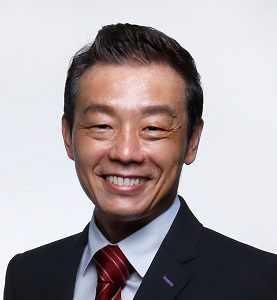 プロのファシリテーターとして、1,000件以上の議論の場をファシリテーションした経験を持つ。組織改革やマネジメント改革のファシリテーションや、企業の中期計画策定、IT戦略、人事制度設計のコンサルティング、ファシリテーションを数多く手がける。ファシリテーションや各種コミュニケーションの研修も開催し、ファシリテーションを活用したグローバル人材育成プログラムの開発にも積極的に関わる。
プロのファシリテーターとして、1,000件以上の議論の場をファシリテーションした経験を持つ。組織改革やマネジメント改革のファシリテーションや、企業の中期計画策定、IT戦略、人事制度設計のコンサルティング、ファシリテーションを数多く手がける。ファシリテーションや各種コミュニケーションの研修も開催し、ファシリテーションを活用したグローバル人材育成プログラムの開発にも積極的に関わる。
英語でのファシリテーション、グローバル人材育成に積極的に関わり、自ら海外とのさまざまなネットワークを開拓。日本の大手企業や外国企業が、国内外で開催するグローバルミーティングのファシリテーションを数多く手がけている。
■国際的なファシリテーター資格
IAF CPF(Certified™ Professional Facilitator)
Language: Japanese, English
Available: Japan, Singapore, Hong Kong, India,other areas in Asia, North America, Eu
言語:日本語、英語
対応可能地域:日本、香港、シンガポール、インド、他アジア、北米、欧州各地
射水和佳子さん きゃりあるき代表

1級キャリアコンサルティング技能士、キャリアカウンセリング協会認定スーパーバイザー、認定ワークショップデザイナー。人材サービス会社にて法人営業、管理職を経験後、研修講師、キャリアカウンセリングスーパーバイザーとして実績多数。
キャリアカウンセリングで培った経験をもとにした、参加者がリラックスして本音で語り合える、暖かく自由な場づくりを強みとする。
Language: Japanese, English
言語:日本語、英語





